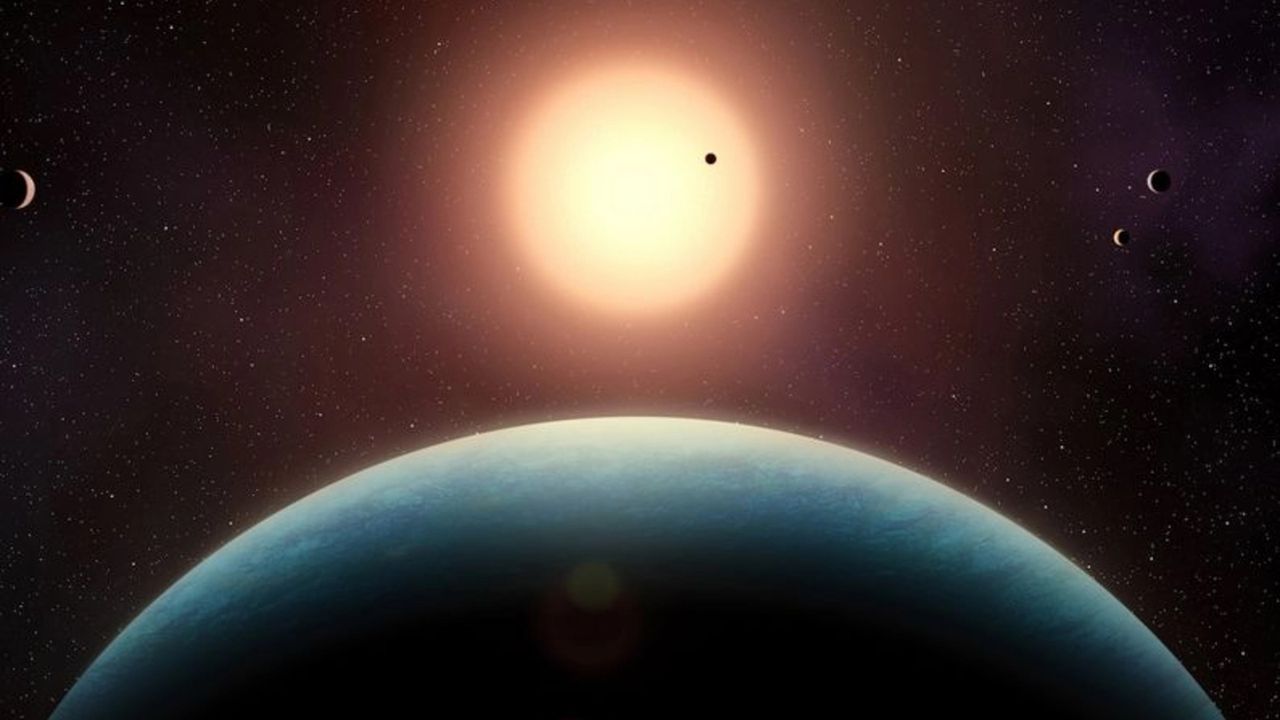Now Reading: Scientists Discover Potentially Habitable ‘Super-Earth’ 35 Light-Years Away
-
01
Scientists Discover Potentially Habitable ‘Super-Earth’ 35 Light-Years Away
Scientists Discover Potentially Habitable ‘Super-Earth’ 35 Light-Years Away

Quick Summary
- Discovery: Researchers identified L 98-59 f, a fifth planet in the habitable zone of red dwarf star L 98-59, located 35 light-years from Earth.
- Features of L 98-59 f: The exoplanet is a “super-Earth” with a minimum mass 2.8 times that of Earth adn an almost circular orbit lasting 23 days. It receives stellar energy similar to Earth, making it perhaps conducive to liquid water and life.
- Research Process: The discovery was made by analyzing data from ESO’s HARPS and ESPRESSO spectrographs alongside NASA’s TESS and James Webb Space Telescope (JWST).
- System Characteristics:
– Planetary diversity includes smaller-than-earth rocky planets and one potentially water-rich world.
– Tidal forces may be causing volcanic activity on the two innermost planets.
– Planets are suitable for atmospheric studies due to their proximity and size.
- Potential Atmospheric Studies: Tools like JWST coudl detect crucial elements such as water vapor, carbon dioxide, or biosignatures if L 98-59 f has an atmosphere.
Findings were published in Earth and Planetary Astrophysics on July 12.
indian Opinion Analysis
The discovery of exoplanetary systems such as L 98-59 highlights humanity’s accelerating capability to explore beyond our solar system using advanced spectroscopic tools like HARPS and space-based telescopes such as JWST.For India, which actively participates in collaborative international space missions through its domestic programs like ISRO’s planned human spaceflight endeavors or scientific satellite launches (e.g., AstroSat), this emphasizes the importance of building partnerships with global institutions contributing to exoplanet research.
Understanding planetary systems outside our own might reshape long-term scientific goals for nations aiming for interstellar research. With investments growing globally into data analysis techniques that evaluate habitability conditions beyond Earth-like atmospheres, Indian researchers could led efforts aligned with planetary science innovations while focusing significantly toward atmospheric observations applicable within astro-biology aspects bridging utility stakes independently too ensuring reputation advocacy partnerships reinforced lastly dispatch new telescope combine similar edges net flare-wide over dataset escalate horizon layouts technology adapt resilient openly-exchanged official blueprint learnings..


























